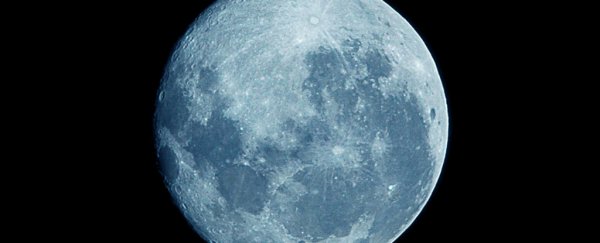On March 31, much of the world will get to see a rare event: A second blue moon in one year.
It will be the second blue moon of 2018 - at least, according to one definition of the term. And our last until 2020.
Despite the name, as many of us have learned at some point (often in a disappointing fashion, if we learned this as a kid) a blue moon doesn't mean the moon turns blue. The term refers to frequency, not colour.
We use the phrase "once in a blue moon" to refer to a rare event. Yet in real life, it sometimes seems we get blue moons on a fairly regular basis.
That's partially because we have two accepted definitions for "blue moon". Both types occur every two to three years (occasionally more often), and if you count both, you get one of these events even more often.
But who's to say that's a bad thing?
Defining a "blue moon"
The next blue moon will arrive March 31. Depending on your time zone, it will be the second full moon of March, the first being the "worm moon".
And according to the more recent and commonly accepted definition of the term, the second full moon in a month is a "blue moon".
But as it turns out, this modern definition actually arose out of a misunderstanding.
The older – and still valid – definition of a blue moon comes from the Maine Farmers' Almanac. Historically, that publication defined a blue moon as the third full moon in an astronomical season containing four full moons instead of three.
In each season, set apart by either an equinox or solstice, there are three months, which would normally mean three full moons. But since threre is a new full moon approximately every 29.5 days, an extra full moon in one season pops up about every 2.5 years.
That definition was misunderstood in a column in Sky & Telescope magazine in 1946, which after a multi-year game of telephone, led to a whole new understanding of the term as two full moons in a month.
That still usually happens every two to three years, but it also allows for the rare two blue moons in a year scenario that's arriving March 31 (something impossible under the older definition). The next time that happens will be in 2037.
Since "blue moon" isn't a technical astronomical term in the first place, both definitions are now considered valid.
Painting the moon blue
If you want to trace the origin of the term "blue moon," however, you might actually reach a time the moon appeared to turn blue.
According to Sky & Telescope, back in the 16th century you might say "he would argue that the moon is blue" about someone who would deny a clear, obvious truth. From there the concept of a "blue moon" came to be the equivalent of "when hell freezes over," something that's just not going to happen.
But then, in 1883, it happened.
The massive Krakatoa volcano in Indonesia erupted, filling the skies with dust and ash. The sky turned red, sunsets turned green, and the moon turned blue, according to NASA.
The same thing happened when the El Chichon volcano in Mexico erupted in 1983, when Mt. St. Helens erupted in 1980, and when Mount Pinatubo erupted in 1991. Forest fires like the September 1953 blazes in Alberta, Canada, reportedly have had similar effects.
In those cases, you have a truly – and fortunately – rare "blue moon".
But with that in mind, we'll happily celebrate the extra full moon in a month or in a season variety.
This article was originally published by Business Insider.
More from Business Insider:
